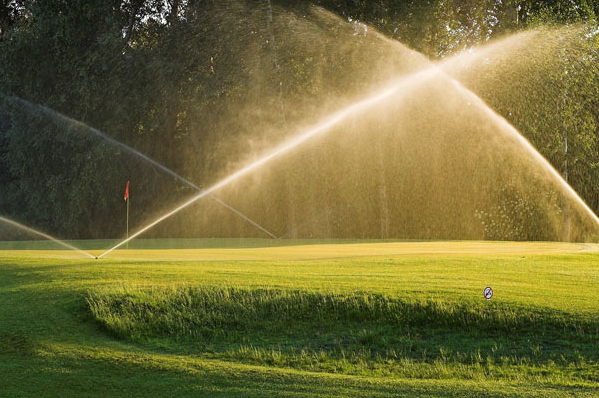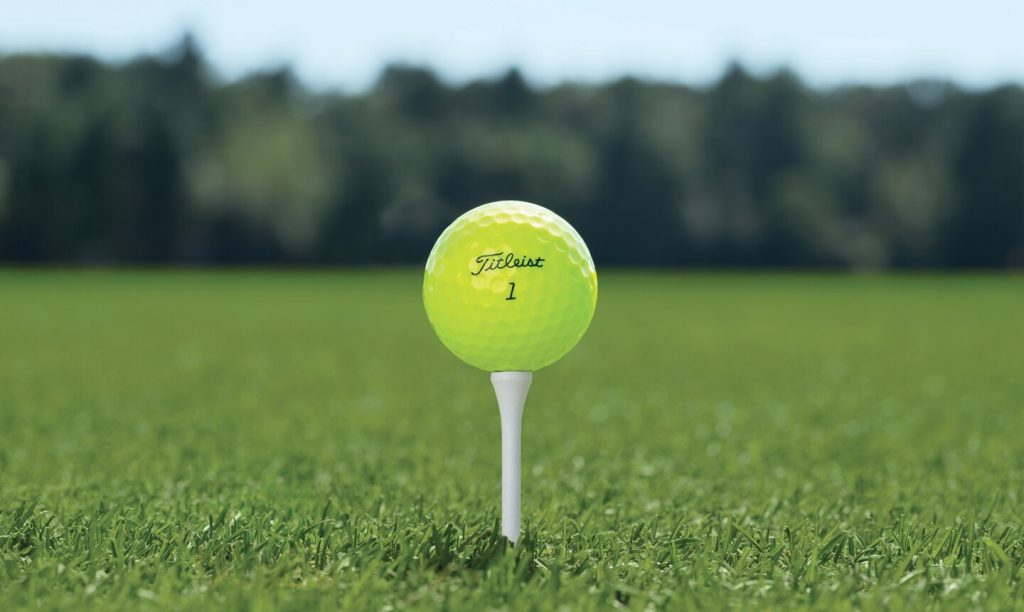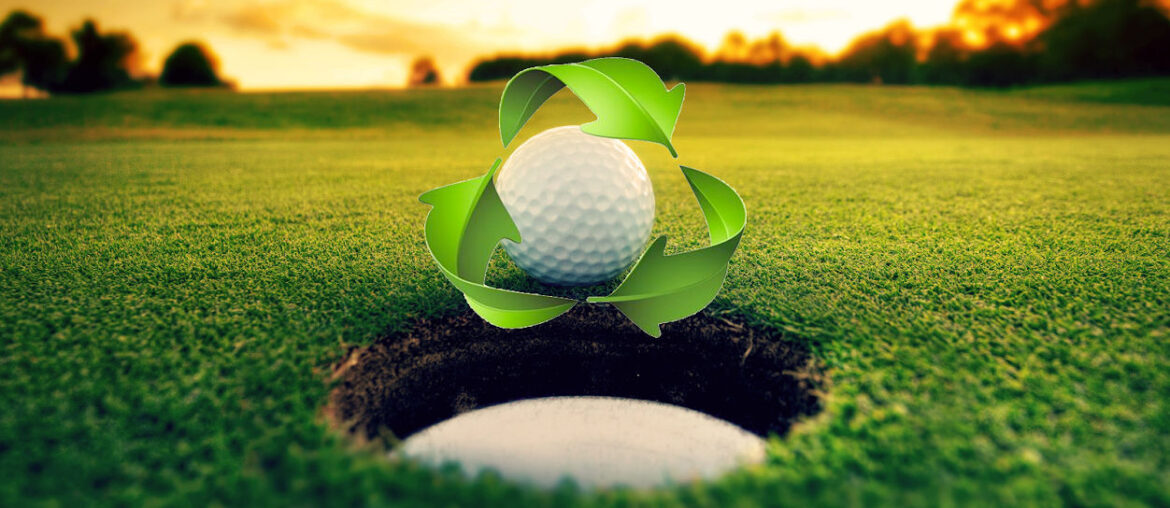Typically associated with a rich person’s sport, golf enjoys a healthy number of players. In fact, there are 9,473 golf courses and country clubs still running in the US.
Despite its avid fans, golf is often seen as one of the worst offenders to the environment. This is quite ironic, considering how people golf on miles of lush green grass.
With climate change worsening by the minute, golf courses, and by extension, golf the sport, are on the verge of eradication. Unless the sport can adopt more sustainable practices. But how exactly can you make golf more sustainable?
Land Use

An average golf course can span 160 acres. That means a common golf course needs 160 acres of land for building purposes. Because the ideal space for a golf course is in or near forests, building one usually results in the destruction of those nearby forests.
Why land use makes golf problematic?
Because of their locations, frequent human activities from golfing disturb the forest’s ecosystem. Through mowing, irrigation, and golfing, it’s difficult for the original ecosystem to recover.
How to make land use in golf more sustainable?
The main sustainability problem with land use is due to maintenance. Mowing, irrigation, and fertilization are top priorities to keep a golf course functional. Moreover, the energy used for maintaining a golf course contributes from 21 to 27% of the primary energy use. This significantly increases golf’s carbon footprint.
Grass maintenance involves lots of chemicals that destroy the soil composition. Instead of chemical herbicides and fertilizers, opt for environmentally conscious herbicides and fertilizers.
Water management

It takes 312,000 gallons per day to water an average golf course, with desert areas like Nevada needing a million per day. In comparison, a small farm only requires around 2,000 gallons per day for crop-watering and animal feeding.
Why water management makes golf problematic?
Climate change has led to more prolonged and frequent droughts. This turns water conservation into a challenge due to the excessive use of water in turfgrass irrigation.
How to make water management in golf more sustainable?
Instead of high water-using turfgrass, golf courses need to favor drought-resistant species. These species don’t need much water to survive and still look good, which lowers the use of water for maintenance. In fact, some drought-resistant turfgrass, like buffalograss, can reduce golf courses’ water use by 50%.
Another way to improve water management in golf courses is to focus on the water conservation system. More specifically, golf courses can perform water-conserving audits to see whether they are wasting water. These audits also help set up more efficient maintenance practices.
Turfgrass

Despite being green, turfgrass is the main reason for golf courses’ unsustainable practices. On any golf course, turfgrass maintenance requires dedication and resources. After all, it takes lots of water and fertilizers to keep the turfgrass green and lush, making the course more aesthetically pleasing.
Why does turfgrass make golf problematic?
Chemical fertilizers can destroy soil composition when abused. And water use can easily become water wastage if golf courses aren’t careful in auditing their water management.
How to make turfgrass in golf more sustainable?
The notion that a beautiful golf course needs stunning turfgrass is outdated. More golfers are expecting to see less of the perfectly maintained green turfgrass when they play. This allows for more drought-resistant, but less aesthetic, turfgrass to be used as a groundcover on golf courses.
Due to its low maintenance, drought-resistant turfgrass is also a good alternative for mowing and irrigation.
Some low maintenance turfgrass includes:
- Bermudagrass: this cold-resistant and drought-resistant grass needs 30% to 50% less water than other high-water-use grasses that need cold weather grass.
- Seashore paspalum can tolerate saltwater, which makes ocean water a possible water source.
- Zoysiagrass is drought and pest-resistant, which means golf courses need fewer herbicides to maintain the grass.
Golf balls

Golf balls are one of the main equipment of the sport, and they are also one of the most purchased golf equipment items. This is, funnily enough, because of how easy it can be to lose a golf ball. Due to their cheap price – a typical golf ball only costs around $20 to $30, most golfers don’t care much if they lose a golf ball.
Why is golf balls make golf problematic?
With 300 million lost or discarded, golf balls pose a serious threat to the environment. Most golf balls are made from polyurethane, a non-biodegradable hard plastic. This makes them plastic litter, which is a threat to the environment. When lost, these golf balls can break into smaller pieces and be ingested by wild fish and birds.
They can even release heavy metals when breaking down. The synthetic rubber core of a golf ball contains a high level of zinc. When submerged, this material slowly releases toxic materials, poisoning the surrounding flora.
How to make golf balls golf more sustainable?
Sometimes, golf balls fall into hard-to-recover locations and are abandoned. To avoid these golf balls becoming an environmental hazard, golfers only need to switch to more eco-friendly golf balls. Made of biodegradable materials, these golf balls make plastic littering a non-problem.
Most biodegradable golf balls are made from actual rubber, instead of synthetic rubber. Better yet, they cost about the same as your regular clubs. Some examples of eco-friendly golf balls are:
- ECOBIOBALL makes biodegradable golf balls, with fish food at their core for marine play.
- Value Golf Balls are made or refurbished from recycled balls.
- Dixon Earth’s golf ball has zero harmful substances at its core.
This doesn’t just apply to golf balls. If you strive to make your golf playing more eco-friendly, sustainably shopping for your golf equipment is also a good choice. With golfers becoming more environmentally conscious, golf equipment brands are becoming more sustainable as well.
In Conclusion

Even golf players are speaking out in support of sustainable practices in golf, most notably Suzann Pettersen. As one of the best golfers of all time, Suzann is now the GEO of Sustainable Golf Champion, doing her part to keep the once environmentally destructive sport greener.
America spends about $500 to $1,000 on golf equipment per year. If you are on a tight budget but still want to shop for golf equipment sustainably, try using Tenere. Tenere is a sustainable shopping web extension that offers coupons from top-selling stores online. With each purchase, Tenere donates a part of its profits to tree-planting organizations worldwide.









